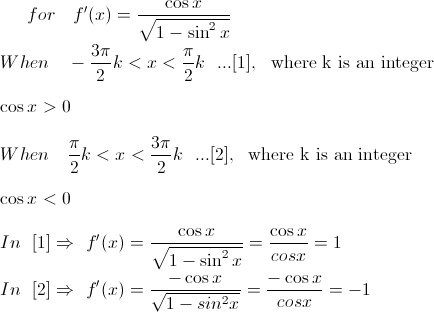darkphoenix
Member
- Joined
- Mar 2, 2011
- Messages
- 60
- Gender
- Male
- HSC
- 2012
differentiate cos^-1(sinx)
I got -cos/ square root (cos^2(x)) so cos cancel out and is -1.
But the answer is +- 1. I don't really understand it... can any one explain? Thanks
I got -cos/ square root (cos^2(x)) so cos cancel out and is -1.
But the answer is +- 1. I don't really understand it... can any one explain? Thanks


